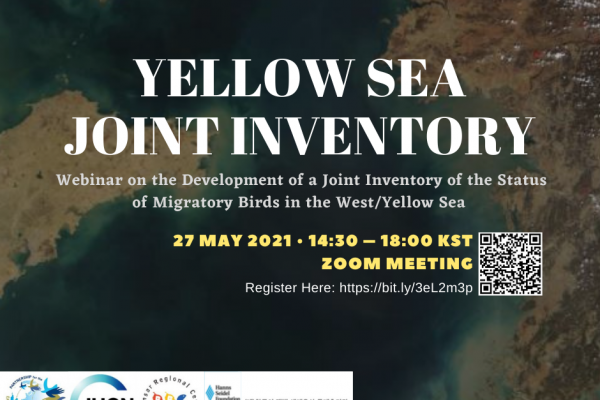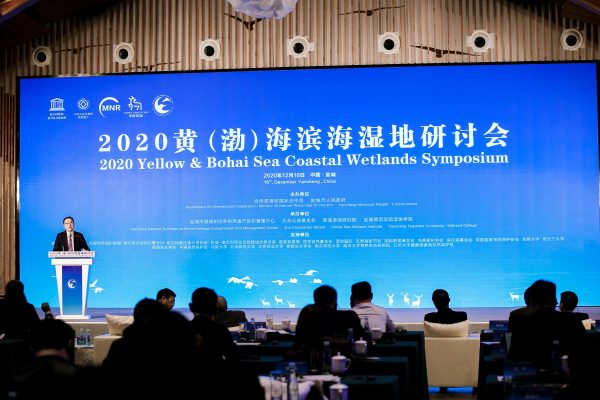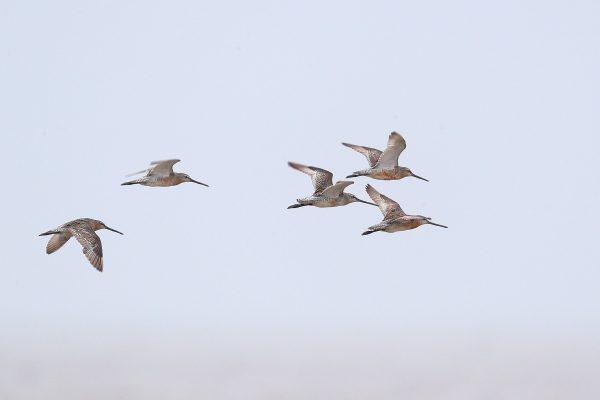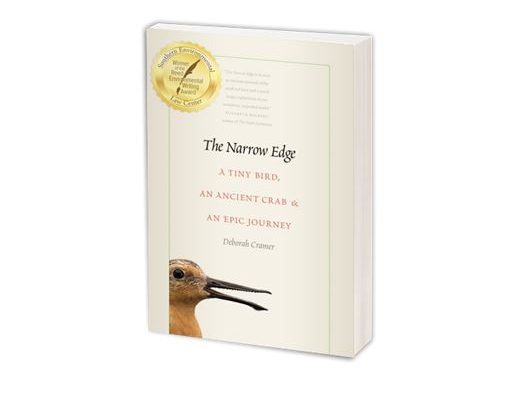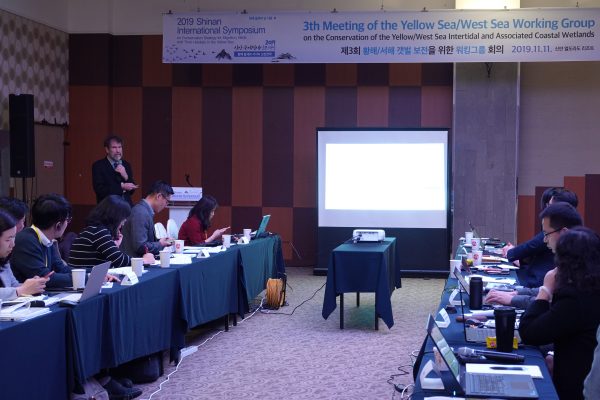-
West/Yellow Sea Webinar – “Development of a Joint Inventory of the Status of Migratory Birds in the West/Yellow Sea”
The EAAFP Secretariat, together with IUCN, Ramsar Regional Center – East Asia are hosting a webinar on the “Development of a Joint Inventory of the Status of Migratory Birds in the West/Yellow Sea” on 27 May at 2:30pm - 6pm (KST) to share views on the key species, population trends and habitats in the East Asian-Australasian Flyway, with particular focus on the West/Yellow Sea region and discuss future collaboration. National Partners and acknowledgeable scholars will present and discuss on the topic. Title: Development of a Joint Inventory of the Status of Migratory Birds in the West/Yellow Sea Date: 14:30 – 18:00, 27 May 2021 (Thursday, KST) Organizers: EAAFP Secretariat, IUCN Asia Office, RRC-EA (Secretariat of the Working Group on the Conservation of the West/Yellow/West Sea Intertidal and Associated Coastal Wetlands) Sponsors: World Heritage Promotion Team of Korean Tidal Flats, Hanns Seidel Foundation Participants: EAAF Countries partners, Representatives from the Ministries of ROK, DPRK and PRC, IUCN, EAAFP, RRC-EA, International Organizations, Researchers, Experts and local NGO Meeting Platform: Zoom https://us02web.zoom.us/meeting/register/tZcqc-Gupj0rHte5LwCPn5COTt-nRVg5A_ti Moderator: Ms. Hyeseon Do, Programme Officer, EAAFP Secretariat Program/Timetable Key Note Speaker: Title: Prof. Richard Fuller Prof. Richard Fuller is a Professor at the University of Queensland. He studies how people have affected the natural world around them, and how some of our destructive effects can best be reversed. To answer these questions, the lab group works on pure and applied topics in biodiversity and conservation, spanning the fields of migration ecology, conservation planning and urban ecology. Much of their work is interdisciplinary, focusing on the interactions between people and nature, how these can be enhanced, and how these relationships can be shaped to converge on coherent solutions to the biodiversity crisis. They have devoted much of the last 10 years to understanding why East Asian-Australasian migratory shorebirds have declined so rapidly and what can be done to reverse those declines.
Continue reading -
2020 Yellow & Bohai Sea Coastal Wetlands Symposium and establishment of Yellow Sea Wetland Institute in China
Since the Coast of Yellow Sea-Bohai Gulf of China (Phase I) in Yancheng was inscribed in the as UNESCO’s Natural World Heritage site on 5th…
Continue reading -
Lianyungang, an important yet overlooked stopover site in the southern Yellow Sea
A Dalmatian Pelican is making Lianyungang pancakes for an Asian Dowitcher, a Eurasian Oystercatcher and an Ancient Murrelet. All four birds rely on Lianyungang during their annual migration. Illustrator © Nemo. Over the past few decades, people have come to realise that tidal flats along the Yellow Sea-Bohai Bay are of paramount importance to migratory shorebirds along the East-Asian Australasian Flyway (hereafter EAAF). For example, several sites along the southern Jiangsu province of China have been recognised as the critical staging ground for globally endangered shorebirds such as the Spoon-billed Sandpiper and Nordmann’s Greenshank. The improving awareness and knowledge were followed by varying degrees of conservation efforts. The most successful story was probably Tiaozini, the most important stopover site for Spoon-billed Sandpipers. In 2019, Tiaozini was included in the scope of natural World Heritage Site, which is the highest level of habitat protection and conservation in China. Unfortunately, sites without stable records of charismatic species like the Spoon-billed Sandpiper has been given little attention. Lianyungang, a long-overlooked coastal jewel Lianyungang is a coastal city located in northeastern Jiangsu. With the Yellow Sea on its east, Lianyungang is roughly 300km north of Tiaozini. There are over ten major estuaries along its 212km coastline, creating vast areas of coastal tidal flats. Probably due to the lack of charismatic species, Lianyungang has been largely overlooked. Waterbird surveys in this area had mostly been conducted by a single volunteer in the past decade, meaning that temporal and spatial coverage were often limited. During May 09-13, 2019, a non-profit organisation called Spoon-billed Sandpiper in China (hereafter SBSinChina) recruited ten experienced surveyors in an effort to conduct a comprehensive waterbird survey in Lianyungang. They found that significant numbers of several shorebird species rely heavily on the Lianyungang coast during northward migration. Locations of the major survey sites, as well as the location of Lianyungang on the east China coast (inset map). Solid lines and dashed lines represent the area of tidal flat and high-tide roost surveyed during May 09-13, 2019. Credit: Google map. Important findings in Lianyungang During the five-day survey, SBSinChina recorded 30 species of 109,028 shorebirds. On May 12, 2019, over 22,432 Asian Dowitchers were recorded at the Qingkouhe tidal flat, which constitutes 97.5% of Asian Dowitchers’ global population estimate. This is by far the highest number of Asian Dowitchers recorded at a single site. The high concentration of Asian Dowitchers at Qingkouhe tidal flat, Lianyungang on May 12, 2019 © Ziyou Yang. Over 3,500 Black-tailed Godwits was recorded on the Xingzhuanghe tidal flat on May 10, 2019, which constitutes 2.2% of its estimated global population. During the five-day survey, the surveyors observed 41 individually flagged Black-tailed Godwits, of which 38 were recorded on the Xingzhuanghe tidal flat. Among those flagged individuals, most were only previously observed at Broome, Western Australia, so the survey results filled a gap in the species’ stopover site and migration strategy. Some of the individually-flagged Black-tailed Godwits recorded on the Xingzhuanghe tidal flat during May 09-13, 2019 © Yongxiang Han. Several other shorebird species, such as Lesser Sandplovers (15.6% of EAAF population), Sharp-tailed Sandpipers (6.9%) and Broad-billed Sandpipers (5.5%) were also recorded in significant numbers on the Lianyungang coast. More details can be found in the 32nd issue of BirdingAsia. It’s no coincidence! SBSinChina’s survey results suggested that Lianyungang is the most important stopover site for Asian Dowitchers during northward migration. In autumn 2019 and spring 2020, SBSinChina carried out additional surveys on the Lianyungang coast. They confirmed that the record-breaking number of Asian Dowitchers observed in spring 2019 was not a coincidence, because over 20,000 individuals were recorded in Lianyungang exactly one year later. They also discovered that Lianyungang is crucial to Asian Dowitchers and some other shorebird species during southward migration, supporting at least 28.5% Asian Dowitchers, 6.6% Black-tailed godwits and 5.1% Great Knots on a single day in August 2020. An elegant Asian Dowitcher in Lianyungang © Zhenhong Hu. Asian Dowitchers were flying above the Qingkouhe tidal flat © Zhenhong Hu. Conservation Implications While the discovery of a critical stopover site is exciting, when the majority of Asian Dowitchers aggregate at one single site during northward migration, they become very susceptible to human activities and/or stochastic events. Currently, the conservation status of Asian Dowitcher is Near Threatened. Although comprehensive, long-term monitoring data is lacking, SBSinChina suspects that the population of Asian Dowitchers may have declined. Given its highly concentrated distribution and suspected decrease in population, the conservation status of Asian Dowitchers may need re-assessment by the IUCN committee to warrant timely conservation of the species. SBSinChina is currently gathering data to reassess the population and distribution of Asian Dowitchers in China and beyond. Although Lianyungang does not boast charismatic species like Tiaozini, it does support significant numbers of other shorebirds that are key components of ecosystems along the EAAF. Currently, coastal wetlands on the Lianyungang coast are largely unprotected. Shorebirds still face multiple threats including tourism development, Spartina invasion and lack of suitable high-tide roosts. The indifferent attitude adopted by the local government towards conservation is not helping. The aerial view of the Blue Bay tourism development project near Linhonghe tidal flat © Dihai Chen. Based on the survey results, SBSinChina recommends that survey efforts should be continued in Lianyungang to inform conservation and management actions. They also suggest that key stakeholders work together to include Lianyungang in phase II of the serial natural World Heritage nomination. Together with other sites along the Yellow Sea-Bohai Bay coast, Lianyungang can provide rich ecosystems to serve both migratory waterbirds and local communities. Article link: https://www.orientalbirdclub.org/birdingasia-32 Prepared by Yang Ziyou from Spoon-billed Sandpiper in China.
Continue reading -
New book “THE NARROW EDGE”, by Deborah Cramer, telling the story of Red Knots
Introduction of the book The Narrow Edge Each year tiny sandpipers—Red Knots—undertake a near miraculous 19,000 mile journey from one end of the…
Continue reading -
Release of the first book on Yancheng World Heritage
World Treasure: Wonderful Yancheng Yellow Sea Wetland, The first book on ecology of World Heritage of “Migratory Bird Sanctuaries along the Coast of the Yellow Sea-Bohai Gulf of China…
Continue reading -
3rd Meeting of the Trilateral Yellow Sea Working Group held in Shinan, Ro Korea
The 3rd Meeting of the Working Group on the Conservation of the Yellow Sea Intertidal and Associated Coastal Wetlands was held in Shinan,…
Continue reading -
Regional Dialogue on the Conservation Management of the Intertidal Wetlands of the Yellow and Bohai Seas
An International Symposium on the Conservation and Management…
Continue reading -

